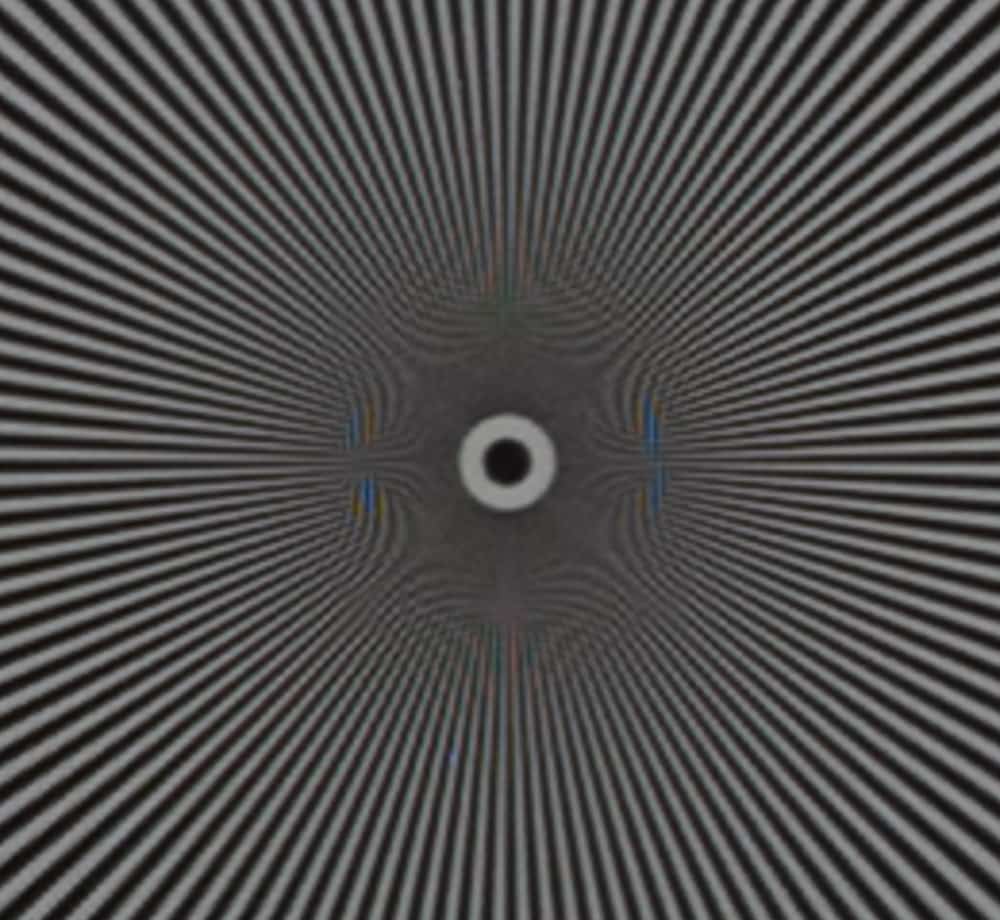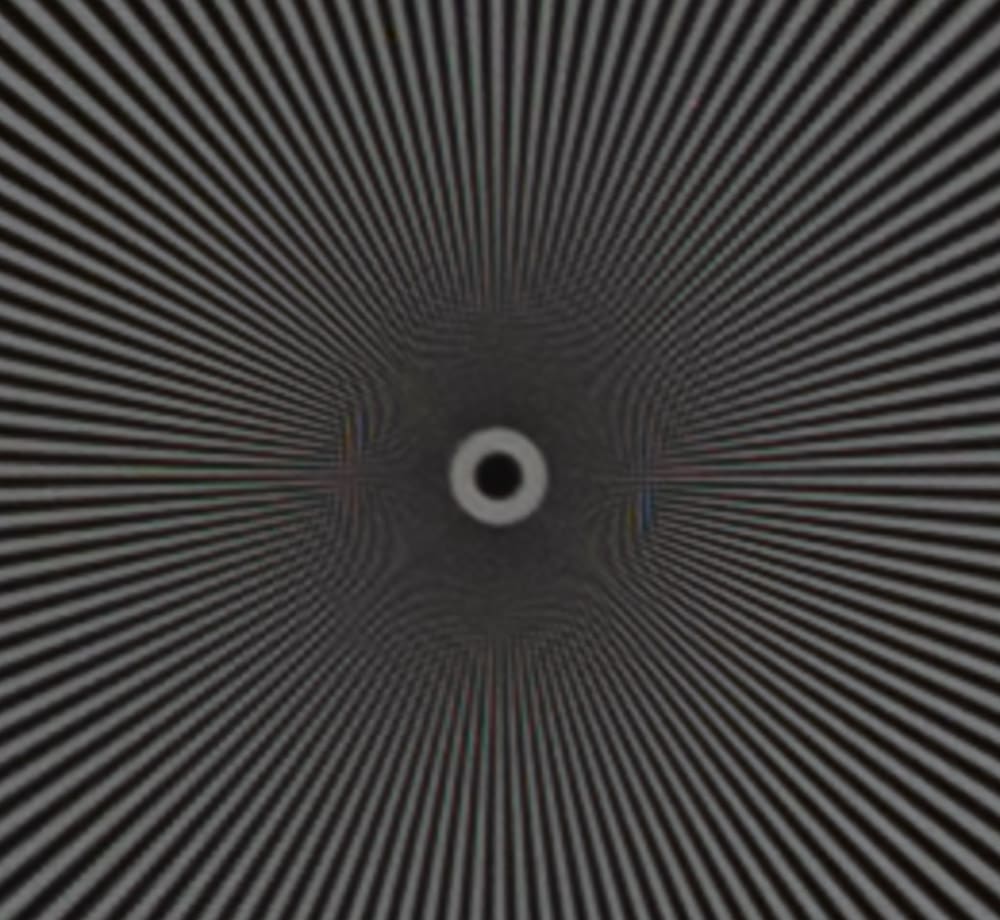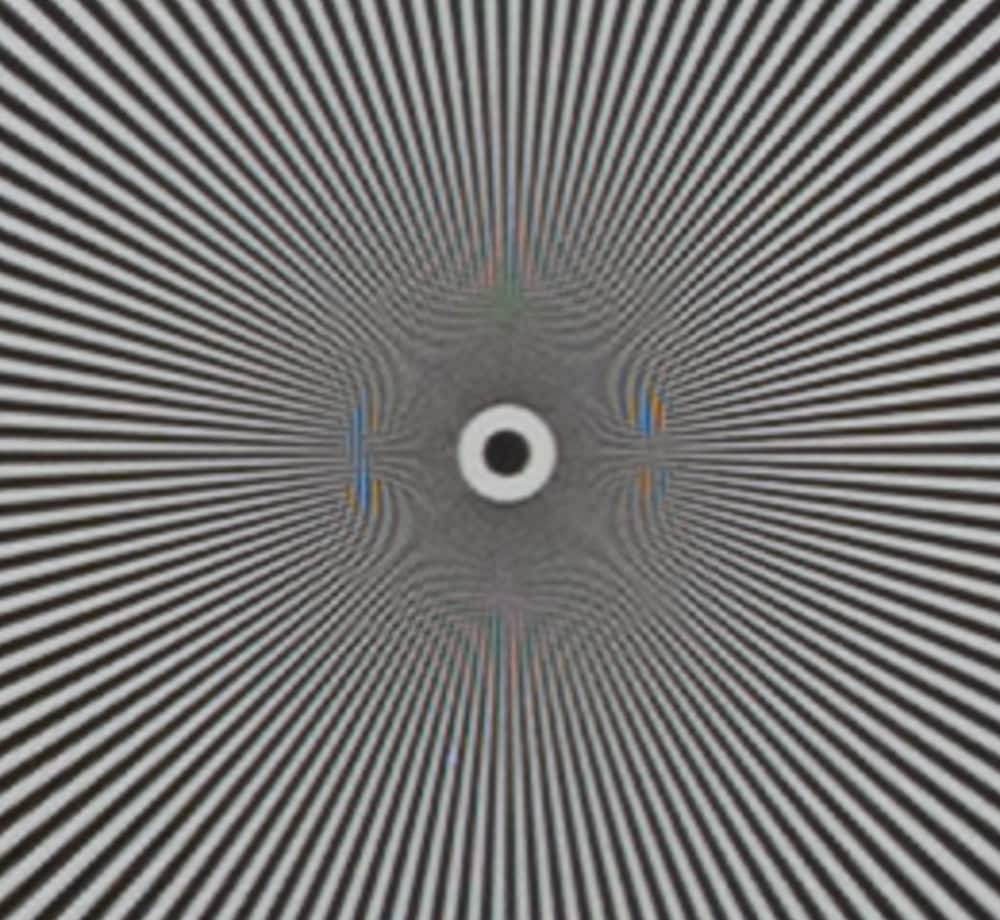I started testing my new 105mm f/2.8 Z-mount Nikkor S lens. I put it on a Z8 body, mounted it on a Edelkron tripod with a Arca Swiss C1 head, and aimed it at a store-bought Zeiss Siemens Star target about 20 feet away.

I shot 6 images at base ISO and 1/400 second using AF-S with the smallest square with the star in the center, at the left edge, and in the upper left corner. I made my first run wide open. I took the sharpest of each of the six samples. Normally, I’d use manual focus for this, but the manual focusing with this lens is so twitchy that that was extremely frustrating.
300% magnification crops, first with no compensation for light falloff off axis.



And here is a set with the light falloff compensated in Lightroom by eye.



After I saw how good these were, I decided that testing at narrower apertures would be pointless. The lens is clearly laying down more detail than the sensor can resolve, all the way across the frame.
Bravo, Nikon!
Pieter Kers says
I too have this lens and it is a gem. On a Z8 I do my manual focus with the focus ring (F9) on MAX and at view at400% – works really good. I find pinpoint AF-S the most accurate AF
Petr_FPL Odehnal says
Try repeating the same test with pixel shift modes.
When I tested the Sony A7R3, the PS4 worked and increased the real resolution because it eliminated the “color guessing” in the demosaic process, but the PS16 didn’t provide any additional measurable increase in resolution.
I was therefore very pleasantly surprised by how the Z8 handled the PS16:
http://www.fpl.cz/tst/ps16_5012.jpg
I hope to see pixel shift in some Z9 firmware upgrade soon!